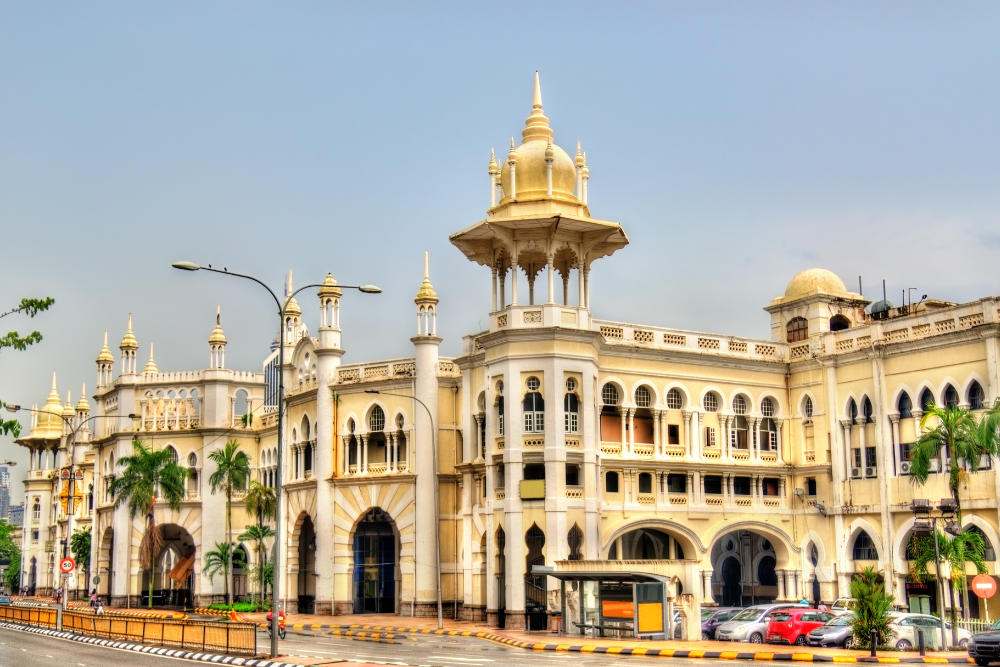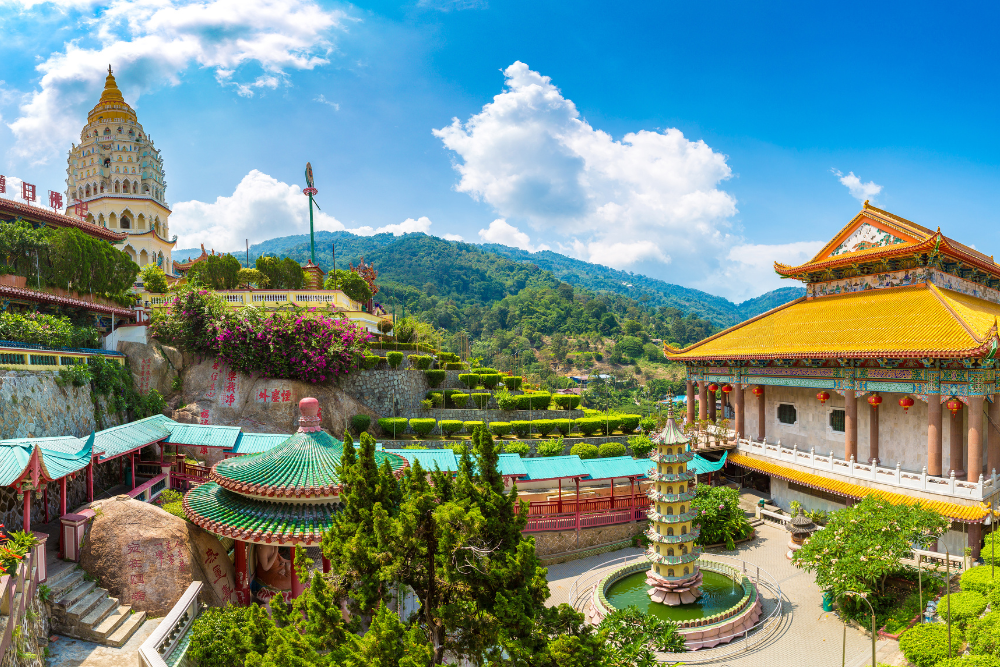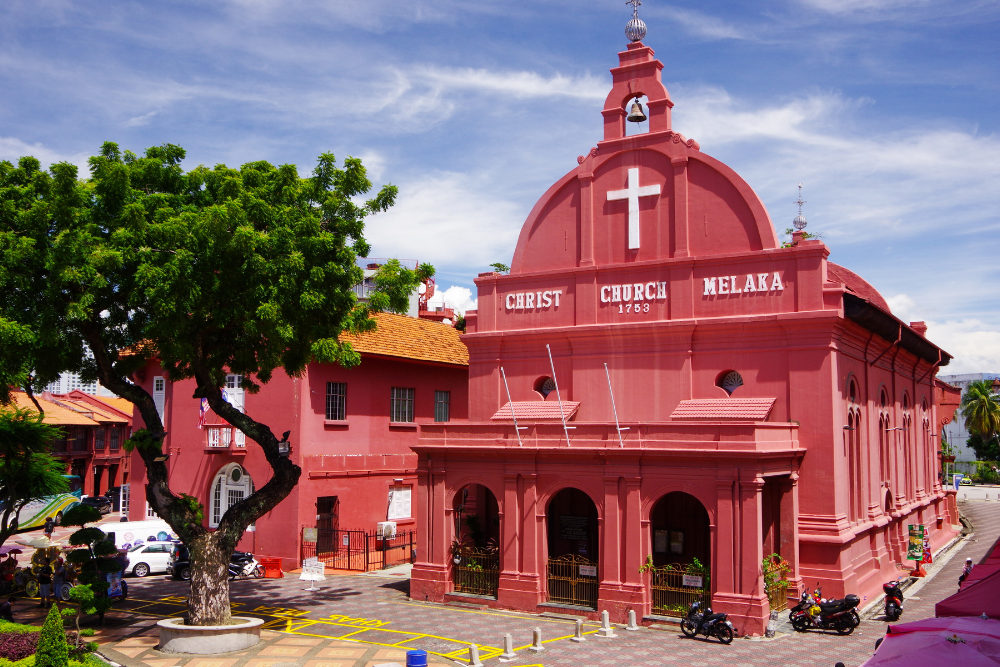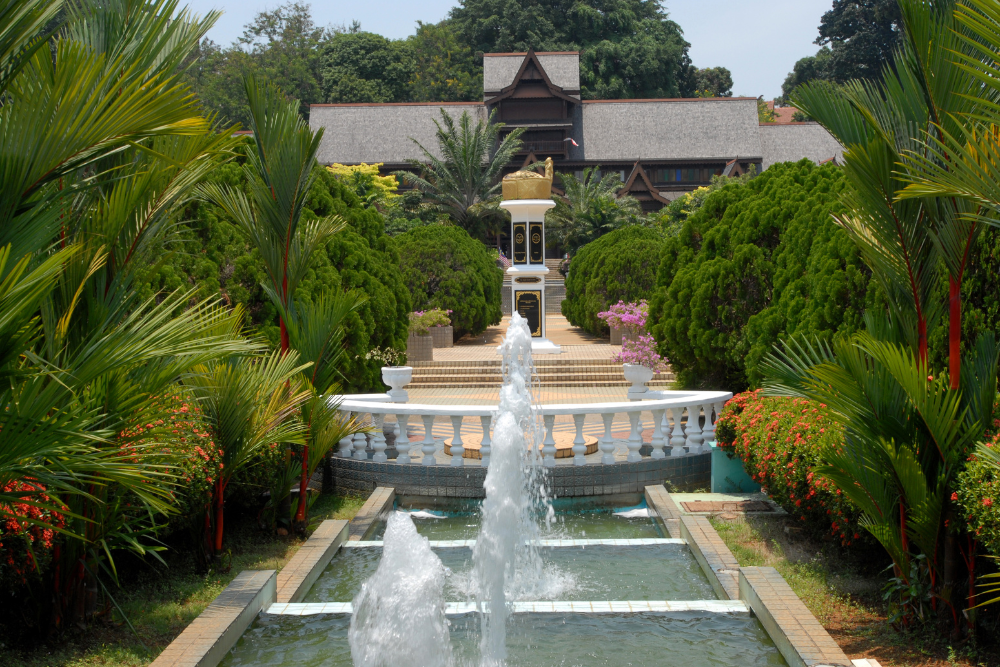Malaysia is a land of diverse cultures, and this is reflected in its stunning colonial architecture. The British, Dutch, Portuguese, and other European powers once ruled parts of Malaysia, leaving behind a legacy of buildings that blend Western and local styles. From grand mansions to charming shophouses, these colonial-era structures are not just beautiful but also tell the story of Malaysia’s past. Here’s a look at some of the most beautiful and historically significant colonial buildings across the country.
1. The Sultan Abdul Samad Building, Kuala Lumpur
Why it’s beautiful:
One of Malaysia’s most iconic colonial buildings, the Sultan Abdul Samad Building in Kuala Lumpur is a perfect example of Moorish Revival architecture, showcasing stunning arches, domes, and intricate detailing. Built in 1897, this building was originally the headquarters of the British colonial administration.
Architectural Highlights:
- The building is most famous for its large copper dome and clock tower, standing at a towering 41 meters high.
- The design also incorporates elements of Indo-Saracenic and Mughal Revival styles, a blend of Indian, Islamic, and British influences.
- Its façade features intricate brickwork, arches, and a prominent clock tower, making it a must-see for architecture lovers.
Best Way to Explore:
The Sultan Abdul Samad Building is located at the heart of Kuala Lumpur, right across from Dataran Merdeka (Independence Square). Take a walk around the square to fully appreciate the building’s grandeur and its historical significance.
2. The Old Railway Station, Kuala Lumpur
Why it’s beautiful:
Another gem in Kuala Lumpur, the Old Railway Station (now part of the Railway Heritage Museum) is a beautiful example of British colonial-era design mixed with local Malay elements. Completed in 1910, the building is an elegant fusion of Moorish, Victorian, and Islamic architectural styles.
Architectural Highlights:
- The building features an impressive façade, with arches and columns that showcase British design principles.
- The whitewashed walls, domed rooftops, and intricate tilework are notable examples of colonial architecture with Eastern influences.
- The station is surrounded by lush greenery, providing a serene atmosphere and a glimpse into Malaysia’s colonial past.
Best Way to Explore:
A visit to the Railway Heritage Museum allows you to dive deeper into the history of Malaysia’s rail system and colonial transportation.
3. The Blue Mansion (Cheong Fatt Tze Mansion), Penang
Why it’s beautiful:
The Blue Mansion in George Town, Penang, is a magnificent example of 19th-century Peranakan architecture. Built by Cheong Fatt Tze, a wealthy Chinese merchant, this mansion is famous for its striking blue exterior and ornate design, which blends Western colonial influences with traditional Chinese elements.
Architectural Highlights:
- The mansion’s vibrant blue walls, red-tiled roof, and wooden doors make it a standout on the streets of George Town.
- The interior is equally impressive, with a grand courtyard, intricate woodwork, and beautiful tile floors that reflect a blend of Chinese, Malay, and European craftsmanship.
- The mansion is a wonderful example of the Peranakan or Straits Chinese style, with decorative elements that showcase Cheong Fatt Tze’s wealth and connections.
Best Way to Explore:
A guided tour of the Blue Mansion is a must to fully appreciate its intricate design and history. The mansion has been lovingly restored and is now a museum, giving visitors a glimpse into the life of one of the wealthiest men of his time.
4. The Royal Selangor Club, Kuala Lumpur
Why it’s beautiful:
The Royal Selangor Club, also known as the “Tin Mines Club,” is another stunning example of British colonial architecture in Kuala Lumpur. Established in 1884, the club has a distinct colonial charm with its whitewashed façade, wide verandas, and green surroundings.
Architectural Highlights:
- The building features a classic British club design, with a large clock tower, wide arches, and elegant colonial detailing.
- The interior of the club is just as grand, with wood paneling, vintage furnishings, and a traditional bar that speaks to the heritage of the British in Malaysia.
- Located next to Merdeka Square, the Royal Selangor Club is the perfect place to stop and enjoy the colonial atmosphere.
Best Way to Explore:
While the club is a private members’ establishment, you can still admire the building’s architecture from the outside. The building is also located near many other historical landmarks, making it a great stop on a walking tour of Kuala Lumpur.
5. The Dutch Square, Melaka
Why it’s beautiful:
The Dutch Square in Melaka is home to some of the most important Dutch colonial buildings in Malaysia. It is a charming and colorful square, filled with red-brick buildings that date back to the 17th century. These buildings were constructed when Melaka was under Dutch rule.
Architectural Highlights:
- The Stadthuys (or Dutch Town Hall) is the standout building in the square. This grand structure is painted in a distinctive red hue and features a simple, symmetrical design that showcases Dutch colonial elegance.
- Christ Church, another striking building in the square, is a lovely example of Dutch architecture. The church’s whitewashed walls and brick-red roof add to the charm of the Dutch Square.
- The Clock Tower, located nearby, was built during the Dutch colonial era and is one of the most photographed landmarks in Melaka.
Best Way to Explore:
The Dutch Square is located in the heart of Melaka’s historical district, making it easy to explore on foot. Take time to admire the architecture and learn more about Melaka’s colonial past in one of the nearby museums.
6. The Ipoh Railway Station, Ipoh
Why it’s beautiful:
Often referred to as the “Taj Mahal of Ipoh,” the Ipoh Railway Station is a grand example of British colonial architecture with Moorish and Islamic influences. Completed in 1917, the station was an important hub during the tin mining boom and remains a key architectural landmark in the city.
Architectural Highlights:
- The railway station features a stunning white façade, large domes, and intricate arches, all inspired by Moorish and Victorian designs.
- Its grand central hall, vaulted ceilings, and classical columns give the building a regal feel, making it one of the most beautiful railway stations in the country.
- The surrounding gardens and manicured lawns provide a serene setting for this architectural masterpiece.
Best Way to Explore:
The Ipoh Railway Station is located in the city center, and while it still functions as a working station, visitors can explore its grounds and take photographs of the beautiful building.
7. The Melaka Sultanate Palace, Melaka
Why it’s beautiful:
Although not strictly colonial, the Melaka Sultanate Palace offers a unique blend of Malay architectural styles influenced by foreign cultures. Built to resemble the palace of Sultan Mansur Shah in the 15th century, the structure has been restored to give visitors a sense of Malaysia’s royal past.
Architectural Highlights:
- The palace is constructed from traditional wooden materials and features intricate carvings and roof designs.
- The building showcases the Malay style with a heavy influence of Islamic art, as seen in the arches, geometric patterns, and Islamic calligraphy on its walls.
- The palace’s interior houses a museum that showcases royal artifacts and history.
Best Way to Explore:
The palace is located near the famous A Famosa fort and is a must-visit for those interested in learning more about Malaysia’s royal heritage.
Conclusion
Malaysia’s colonial buildings are much more than just beautiful structures; they are tangible pieces of the country’s rich history and diverse cultural heritage. From the grand architecture of Kuala Lumpur to the colorful streets of Melaka, these buildings tell the story of a time when foreign powers shaped Malaysia’s identity. Whether you are an architecture enthusiast or a history lover, these colonial buildings are a testament to Malaysia’s fascinating past and its ongoing journey toward modernization.












